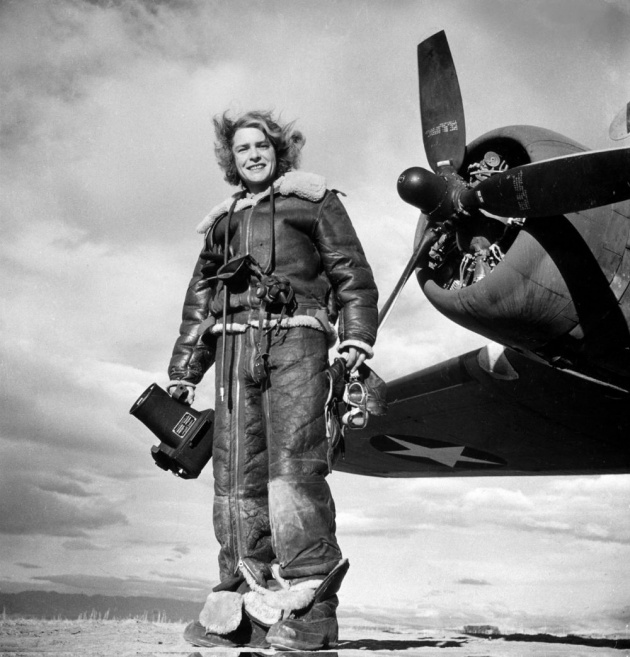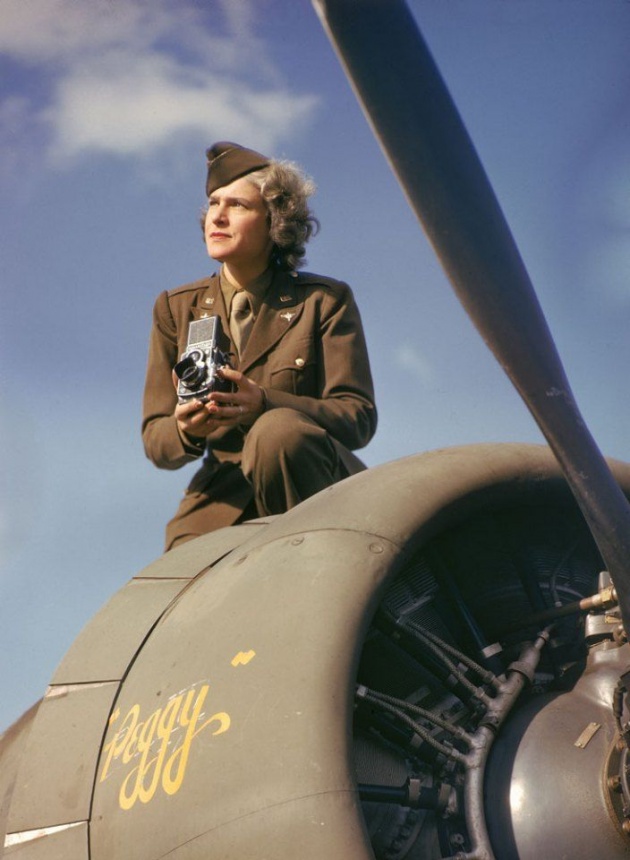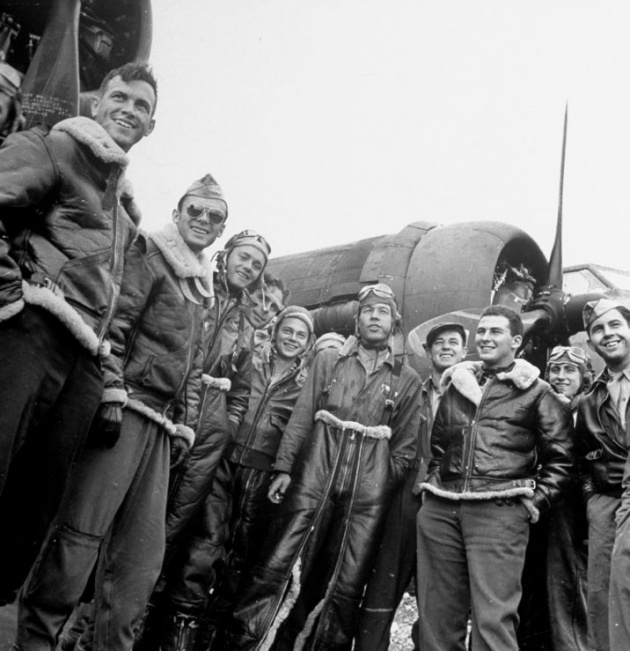Margaret Bourke-White has the unique distinction of not only being the first woman to fly aboard a US bombing mission but more importantly of being the first female war correspondent and combat photographer.
By the outbreak of WW2 Margaret was already a well established photojournalist, becoming LIFE magazine’s first female photographer in 1935, having documented Depression-era America during the 1930s. She produced one of the most iconic photographs of the period while covering the impact of floods in Kentucky with her photograph ‘Kentucky Flood’. Which showed a breadline juxtaposed against a billboard boasting America’s high living standard becoming one of the period’s most powerful images.
During the late 1930s she had travelled Europe extensively documenting Nazi Germany and Soviet Russia. It was in Russia that Bourke-White took her first combat photographs – of a German air-raid on Moscow on 22nd June 1941. The US Government was reluctant to allow a woman to act as a war correspondent covering US military operations, however she persevered, lobbying tirelessly to cover combat operations, and was eventually allowed to join US forces in Europe.
In 1942, Bourke-White began covering US bomber crews stationed in England during their day-time raids on Nazi Germany. On the 22nd January 1943, she became the first woman to fly on board a US combat mission. Some of the photographs she took can be seen above (images #3, 4 & 5).
Sadly, in 1953 she was diagnosed with Parkinson’s Disease which eventually ended her photography career, although she went on to become a successful author writing half a dozen books before she passed away at the age of 67 in 1971.
Margaret Bourke-White was undoubtedly one of the most ground breaking female journalists of the 20th century paving the way for many women who would follow her. Her skill as a photographer and the iconic images she captured, many of which remain instantly recognisable today, mean that she has an almost unparalleled legacy.







